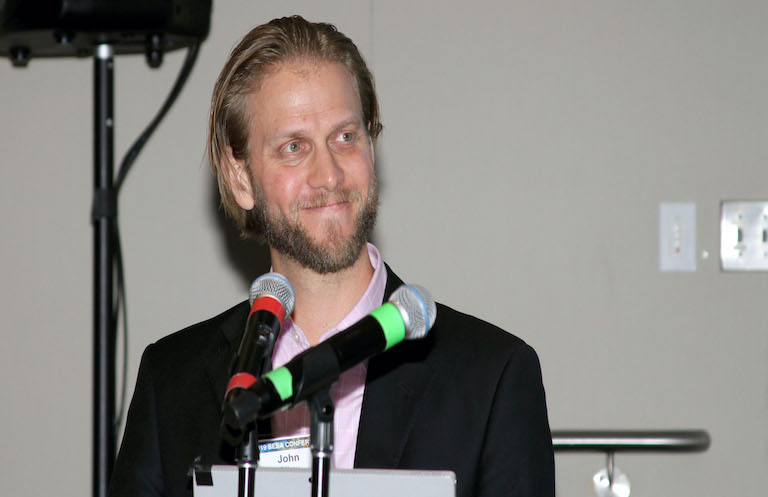Shattering the stories we tell ourselves

John Silkey

As a white man who considers himself a Black Lives Matter ally, I find myself confronting hard truths this week. Too often my support has looked like, “But what can I do? What is the right action? What will be most helpful?” I used perfection as a defense against actually stepping forward.
I offer a story of my “whiteness” and privilege, what I learned from SEEA staff and board’s commitment to act, and some steps white men like me can take right now to start to fix the problem.
I currently have the honor of serving as chair of the SEEA Board of Directors. SEEA staff have been holding the space for diversity, inclusion, and integration work for more than four years now. Three years ago, following staff’s lead, the SEEA board took a hard look at our lack of diversity. We took stock of diversity metrics looking primarily at race and gender (geography is also a consideration given the mission of our organization).
We then set targets for improvement. We reported against them at every board meeting. We also established a Diversity, Inclusion, and Integration Plan overseen by a subcommittee of the board. In our most recent strategic plan we included a set of value statements that intentionally address diversity and we have a section in our strategic plan that details this area of our work. In short, we committed to becoming a board more representative of the Southeast.
This past year we had six open board seats and focused our search on female candidates and people of color.

Here’s where my personal story kicks in. I applauded the intention and the goal, but inside I told myself a story, “Our industry is predominantly white and male. We’re not going to find enough candidates that fit our standard qualifications for board membership and who are people of color.”
It was an old story, one I had learned and internalized over my life as a white male living in a power structure that provides a tailwind for people like me; a story that I easily adapted and updated to fit my progressive life.
The board made a list of anyone we knew who we thought would be a good addition to our group. We then looked at that list and noted which potential candidates would add to our board diversity by gender and/or race. We contacted every individual on our list in addition to casting a wide call for applications.
At the end of the application period we were left with ten candidates, only one of whom looked like me.
My story was shattered. I had projected my limited and very white network onto an entire industry. I was unaware how thoroughly my limited worldview had become my story of the world writ large. My work with SEEA helped me to actually see my unconscious prejudice for the first time. Here’s what I learned and what other white men like me can do to move past questions and helplessness and use our privilege within the system to make lasting change:
1. Be willing to question your beliefs. Your story is not the story. Let go of it and invite the discomfort of the unknown. The National Museum of African American History and Culture has released a portal to help people explore issues of race, racism, and racial identity.
2. If you have decision making authority in your organization – measure your company’s or your board’s diversity metrics and update your recruiting and hiring policies. White men with decision making authority love to spout, “what gets measured gets managed.” Put that cliché to good use.
3. Recruit outside of your network. If you rely on your existing network you’ll get more of the same. Overqualified and diverse job candidates are everywhere, and they can use our help finding the opportunities that have always just been there for white men like me. One easy step to find great candidates is to recruit at historically black colleges and universities like Spelman College, Morehouse College, Howard University, and Florida A&M University.
Last Tuesday we took another bold step as a board. We decided to refocus the time we had held for another meeting to have a Caring Conversation to reflect upon and discuss the current state of civil unrest and structural racism. We all found it cathartic, trust building, and supportive. We are providing the template for this conversation if you would like to emulate it in your own organization.
I can, and must, do more. We all must. And I am starting today.
To begin, SEEA has compiled a list of resources to aid in the work of addressing racism.
I am proud to be a member of SEEA, and to have the opportunity to learn from staff, my fellow board members, and members across the Southeast like you. If you find yourself lost or questioning in these times as I did, know that SEEA staff is here to support with experience and guidance in how your organization can make a difference.

